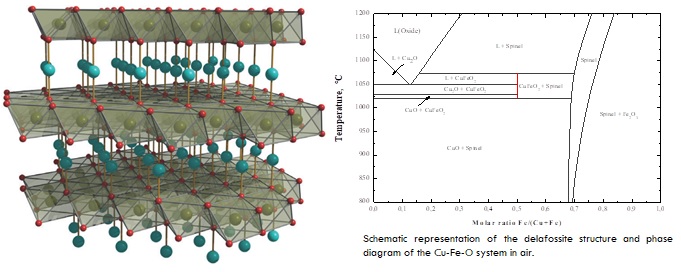
Juliano Schorne Pinto
Université de Toulouse, France
Title: Thermal-structural and elemental analysis of Cu-Fe-O system coupled with available thermodynamic modeling
Biography
Biography: Juliano Schorne Pinto
Abstract
The Cu-Fe-O system has a great technological interest in the copper industry, as well as the development of catalytic compounds and transparent devices. The CuFeO2 phase (delafossite) and CuxFe3-xO4 phase (spinel) exhibit remarkable electrical, magnetic, optical and optoelectrical properties. Therefore, an in-depth understanding of the stability of the delafossite structure becomes of particular interest for fundamental research and for instance, its applications to the development of efficient p-type TCOs. The purpose of this study is reviewed the structural and thermodynamic information and phase equilibria of the Cu-Fe-O system in addition to checking the consistency of the available thermodynamics models with the experimental data. First, several of these models based on the CALPHAD method were reviewed and differences were highlighted. Moreover, several experimental procedures were employed to establish the relationships among temperature, lattice parameter, and stoichiometry of mixed oxides. In situ HT-XRD (High-temperature X-Ray Diffraction) and TGA/DTA measurements, Rietveld refinement were used to provide thermo-structural information in the range of 50° to 1100°C from stoichiometric mixture of CuO and Fe2O3 single oxides. Plasma Sintering (SPS) followed by adjusted post-annealing treatments were used to stabilize delafossite phase in different Copper/Iron gradient and analyzed by Electron Probe Micro-Analyzer (EPMA). The HT-XRD demonstrated that the spinel phase started to be formed from 750° and increases the amount of Cu after 900°C (CuxFe3-xO4). In addition, the variation of lattice parameters of spinel phase was determined by Rietveld refinement and compared with those of different molar ratios. Contrary to all the models, EPMA coupled with local structural analysis showed that delafossite phase could be stabilized with a substantial degree of cationic non-stoichiometry. These results were related to available thermodynamics models providing an improved understanding of this system, new information has generated to implement the existing data. The need to develop and improve a new model is considered.

